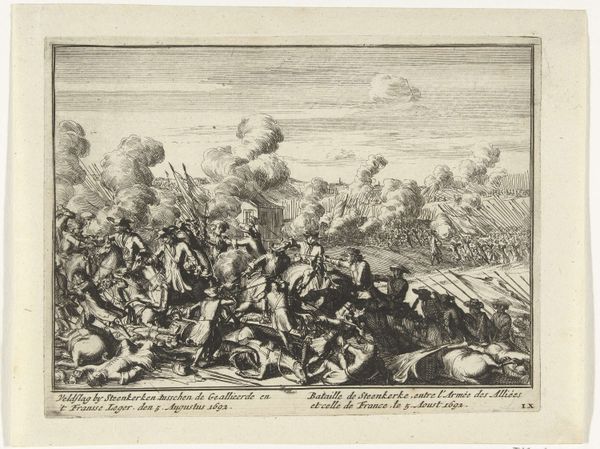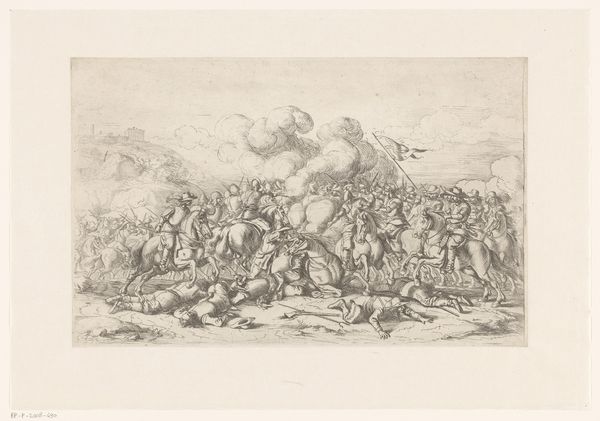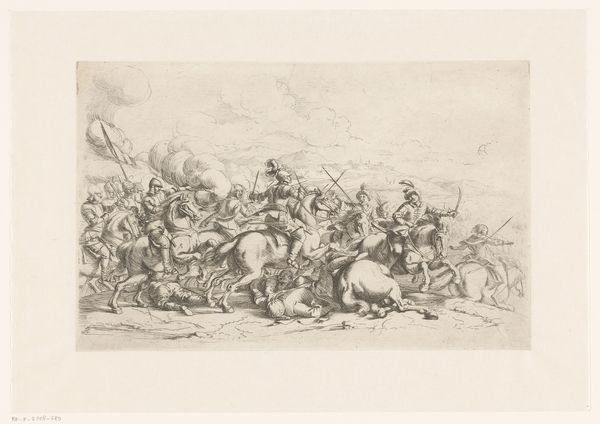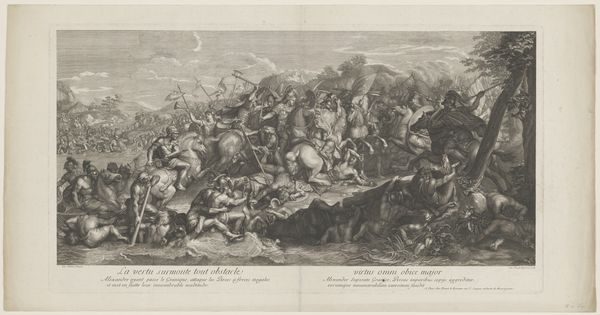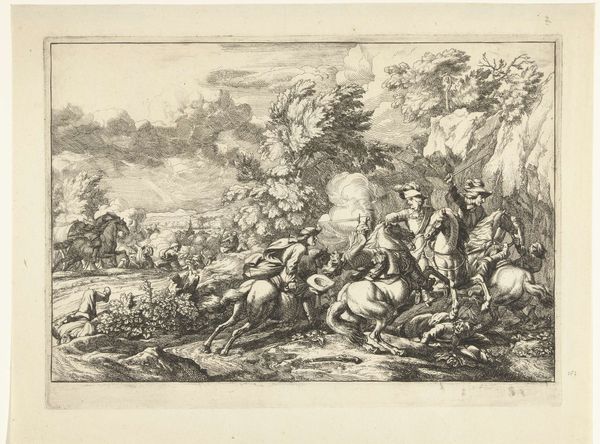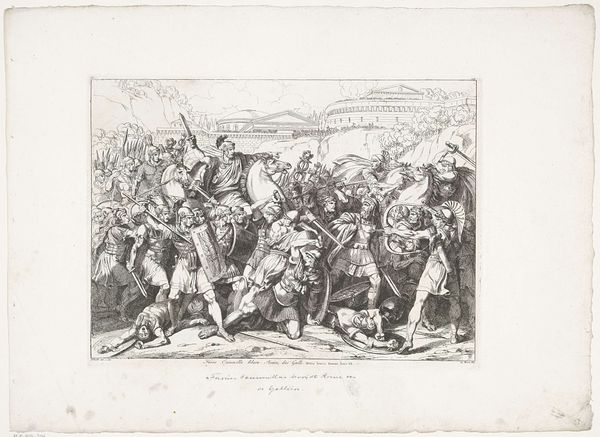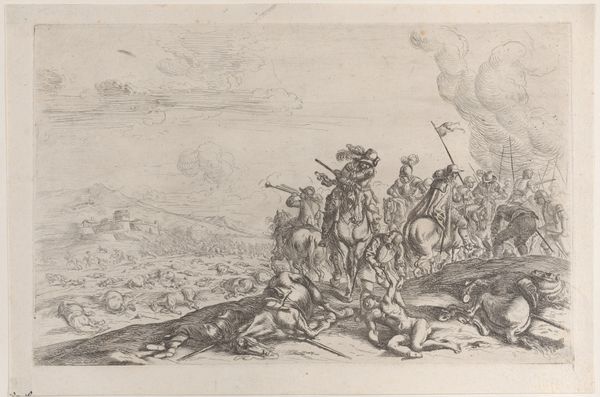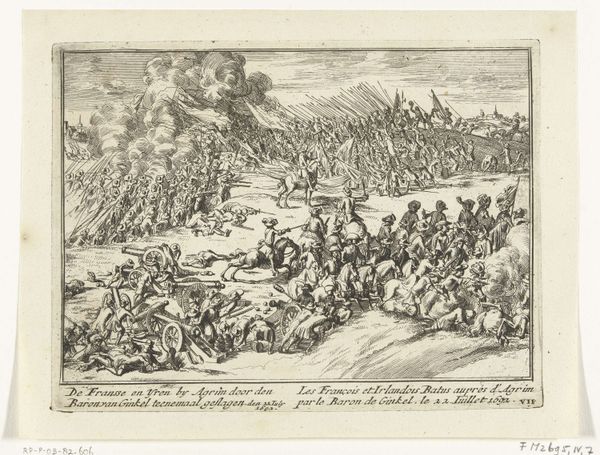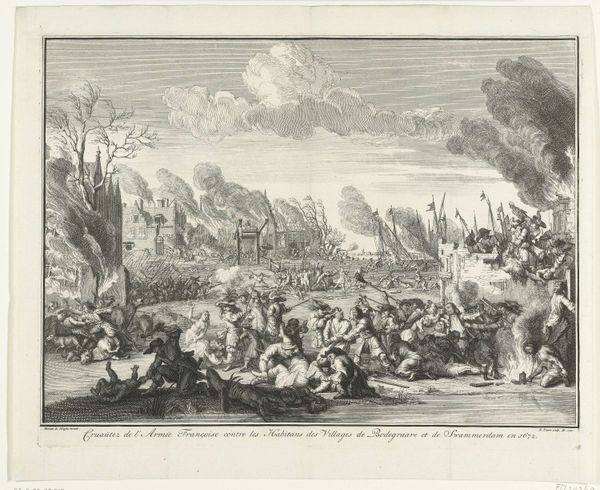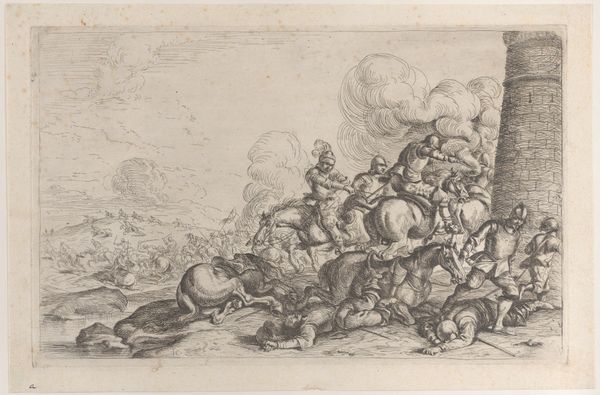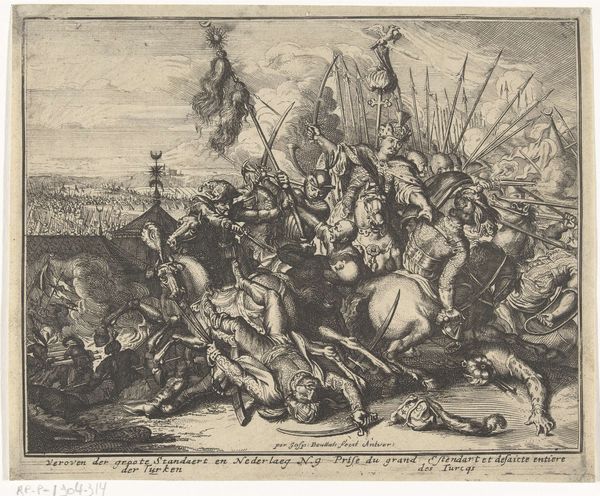
print, engraving
#
baroque
# print
#
old engraving style
#
figuration
#
line
#
history-painting
#
engraving
Dimensions: height 154 mm, width 200 mm
Copyright: Rijks Museum: Open Domain
Editor: This is Pieter Pickaert's "Slag bij de Boyne, 1690," created in 1691. It's an engraving and immediately striking – it's so packed with figures and detail, chaotic almost! How would you interpret this piece in the context of its time? Curator: Given that this engraving was made so shortly after the actual Battle of the Boyne, it functions almost like a contemporary news report. The depiction, though detailed, is interesting when considering the context. Consider how battle scenes are visually framed; what purpose does glorifying military might serve politically and socially? Editor: That's fascinating. It seems like propaganda almost, emphasizing victory and power. Curator: Exactly. It's worth thinking about who commissioned this print and for what purpose. The artist and publisher likely aimed to solidify William of Orange’s claim to the throne and to rally support, particularly among the Protestant population. Does that shift how you view the chaos you observed initially? Editor: Definitely. I was focused on the busyness of the image, but knowing its intent, I see the figures as symbolic tools instead, carefully arranged for maximum impact and narrative control. Are these types of images common at this time? Curator: Certainly. History painting served a crucial role in shaping national identities and justifying political actions, particularly within court circles and public institutions that disseminated this imagery. This image provides valuable insights into the ways historical events were constructed and communicated to the public in the late 17th century. Editor: That completely reframes my understanding of it. What I initially perceived as just a historical record now appears as a potent political statement carefully crafted for public consumption. Thank you. Curator: And thinking critically about the visual representation of power and historical events allows us to unpack the biases inherent in historical narratives and understand how art can function as a form of political persuasion.
Comments
No comments
Be the first to comment and join the conversation on the ultimate creative platform.
